Throwback Thursday: Banquet at Summer’s End in 1920
Over 100 years ago, the P.A.F.A. Summer School held a Thankful Banquet to Mark the End of Summer
A week before Thanksgiving, we want to take a moment to highlight a different kind of autumn celebration that took place in Yellow Springs over 100 years ago.
Thanksgiving, as we know it today, is a distinctly American holiday. While we might picture a thankful community of Pilgrims or consider the Indigenous Peoples who lived here before colonization, it’s key to remember that many Thanksgiving traditions began much later.
During the Civil War era, people set the ‘bones’ of the holiday in place, and traditions and holiday trappings of the day evolved over time. Before the holiday standardized, communities celebrated Thanksgiving at different times througout the year with different regional flavors. In general, however, a strong recurring theme of a harvest celebration occurred in mid to late autumn, and communities gathered to celebrate a fruitful crop with celebration and a good meal.
While the celebratory banquet we discuss today did not serve as a distinctly festive occasion, it still celebrated the end of summer and a fruitful harvest. This, however, was a crop of art students.
Students’ Banquet at the Pennsylvania Academy of Fine Arts in Chester Springs, September 28, 1920
This beautiful piece of calligraphy commemorates the student’s banquet held on September 28, 1920.

This is the original piece, and we know that Irvin S. “Shorty” Yeaworth purchased it (along with several other P.A.F.A-era items from our archive) when he bought the property wholesale in the early 1950s.
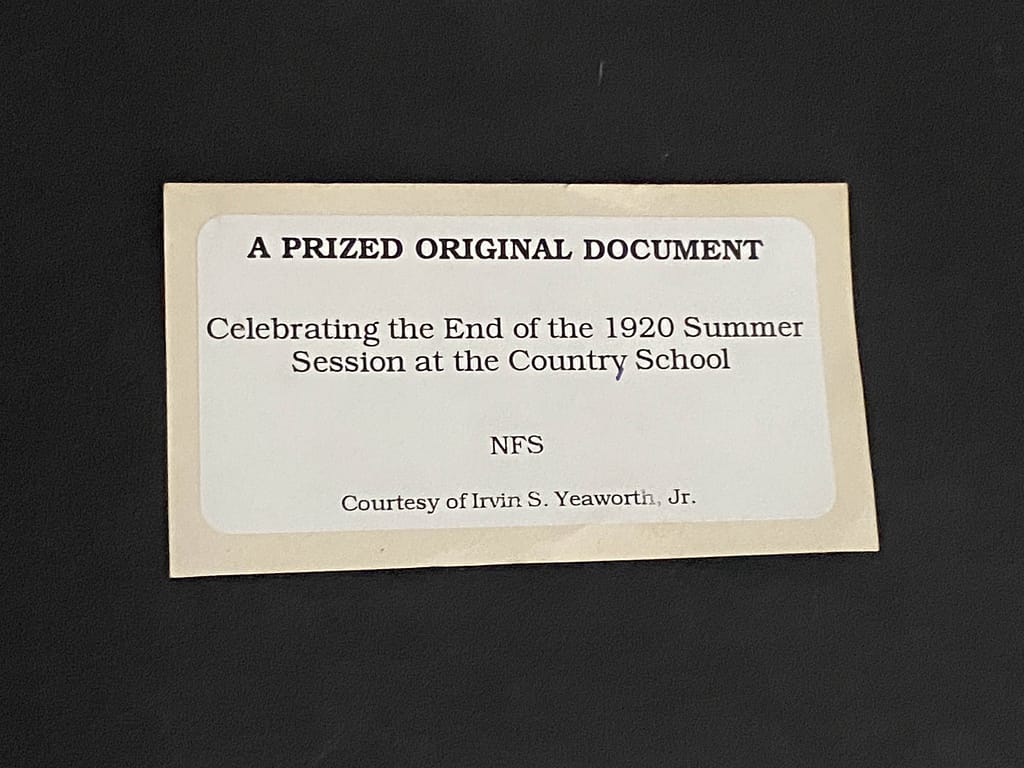
Yeaworth donated this particular item to Historic Yellow Springs sometime after 1977.
This information tells us that the paper, with its beautiful calligraphy and finely detailed decorative flourishes, is original. All the signatures of the students and teachers present are also original.
By examining these signatures, we can learn more about the class of 1920 that spent their summer at the Country School.
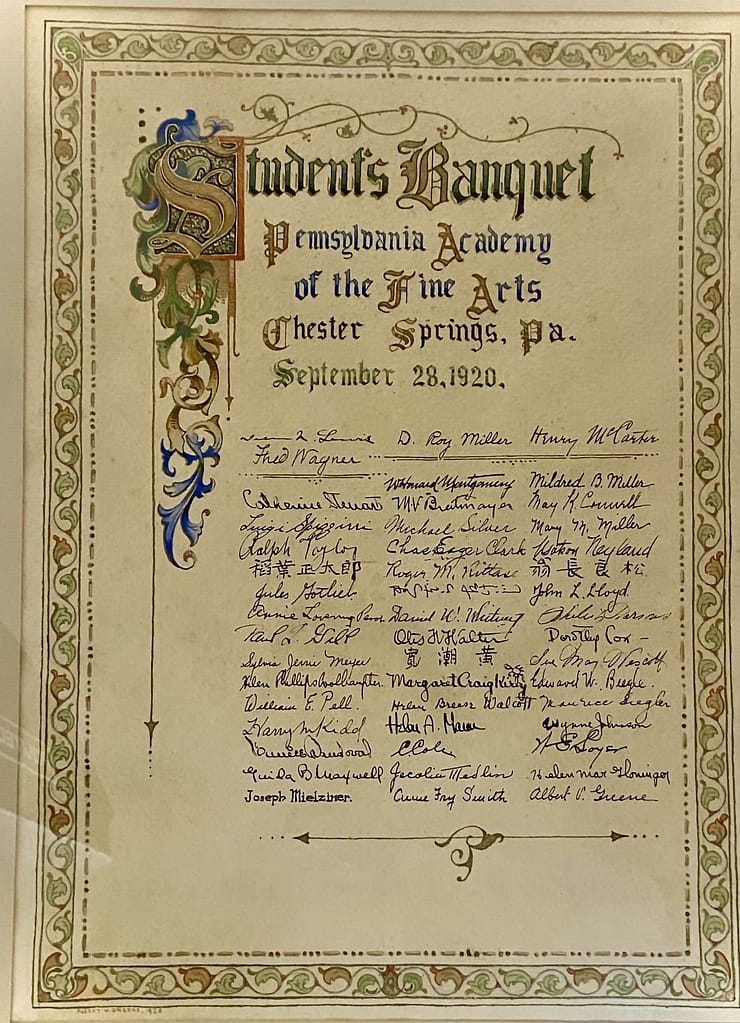
For those familiar with the lore of Yellow Springs, a few names stand out in particular: D. Roy Miller and Fred Wagner. We will focus on these gentlemen in future posts as we develop a more comprehensive account of their time here. For now, however, we will turn our attention to one of the students.
At the very bottom corner of the document, we see a list of names signed by the students, and one name stands out too: Albert V. Greene.
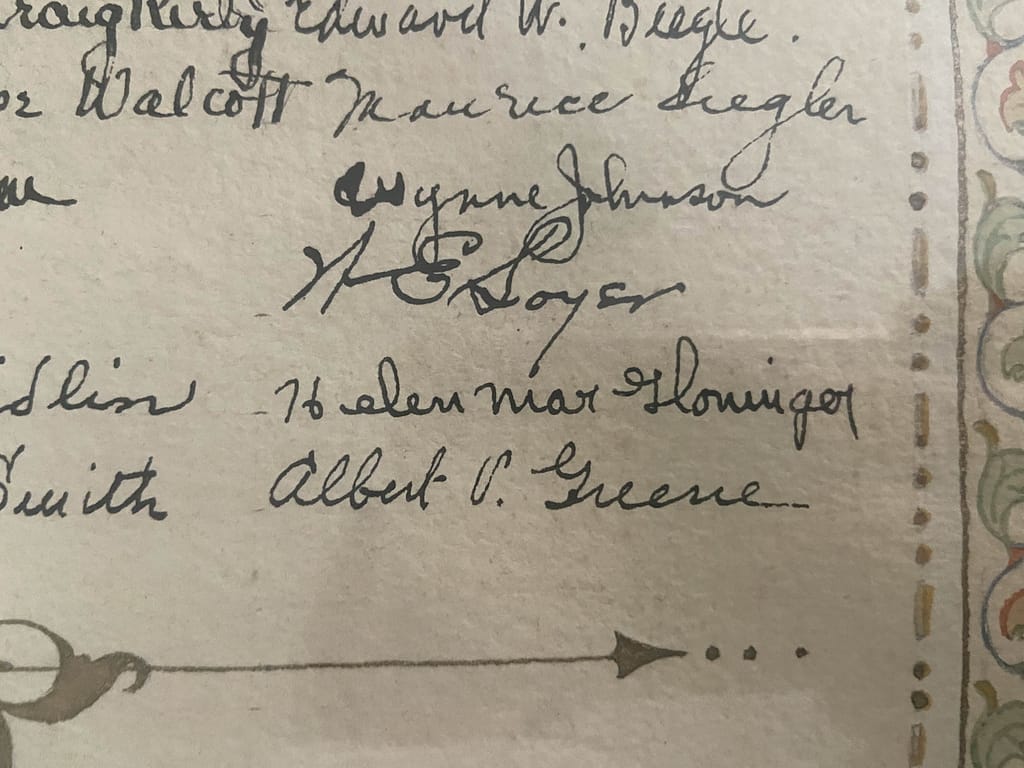
Albert V. Greene is a name that also appears in the intricate decorations along the edges of the paper, showing that Mr. Greene created this beautifully detailed work as well.
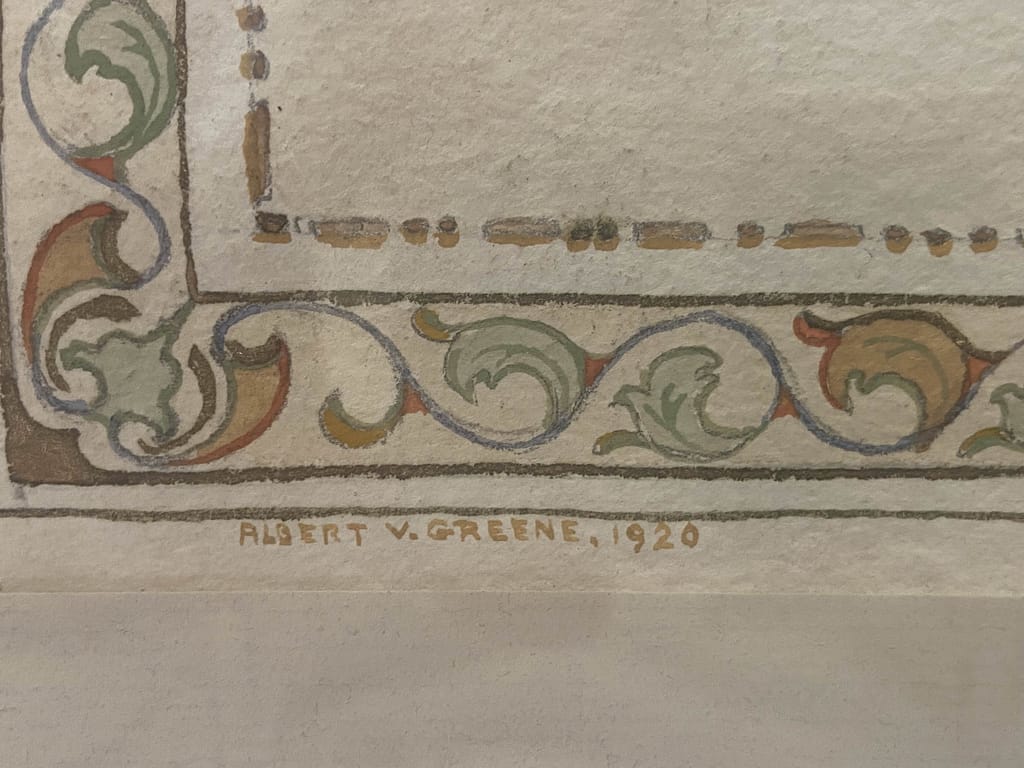
Helpfully, Albert included a date for us here, and we can confirm that he made this illustrated document during 1920 for the Student Banquet itself.
While he studied during the 1920 summer season, Albert Van Ness Greene returned many times and spent much of his life in and around Yellow Springs.
Paintings of Albert Van Ness Greene
Greene gained recognition as an artist, making him somewhat of a local celebrity.
People respected him highly in the artistic community. His personal life, with his somewhat reclusive nature— later described by P.A.F.A. students as that of a “local hermit”— added to his uniqueness as a local figure in Yellow Springs.
The audio recording below offers a tour of painting sites linked to the Yellow Springs camps and shares more information about Albert Van Ness Greene and other notable painters from the P.A.F.A. era.
In the Moore Archives, we also maintain several pieces from Mr. Van Ness Greene. We will display a few of them below.
Ballerina Painting
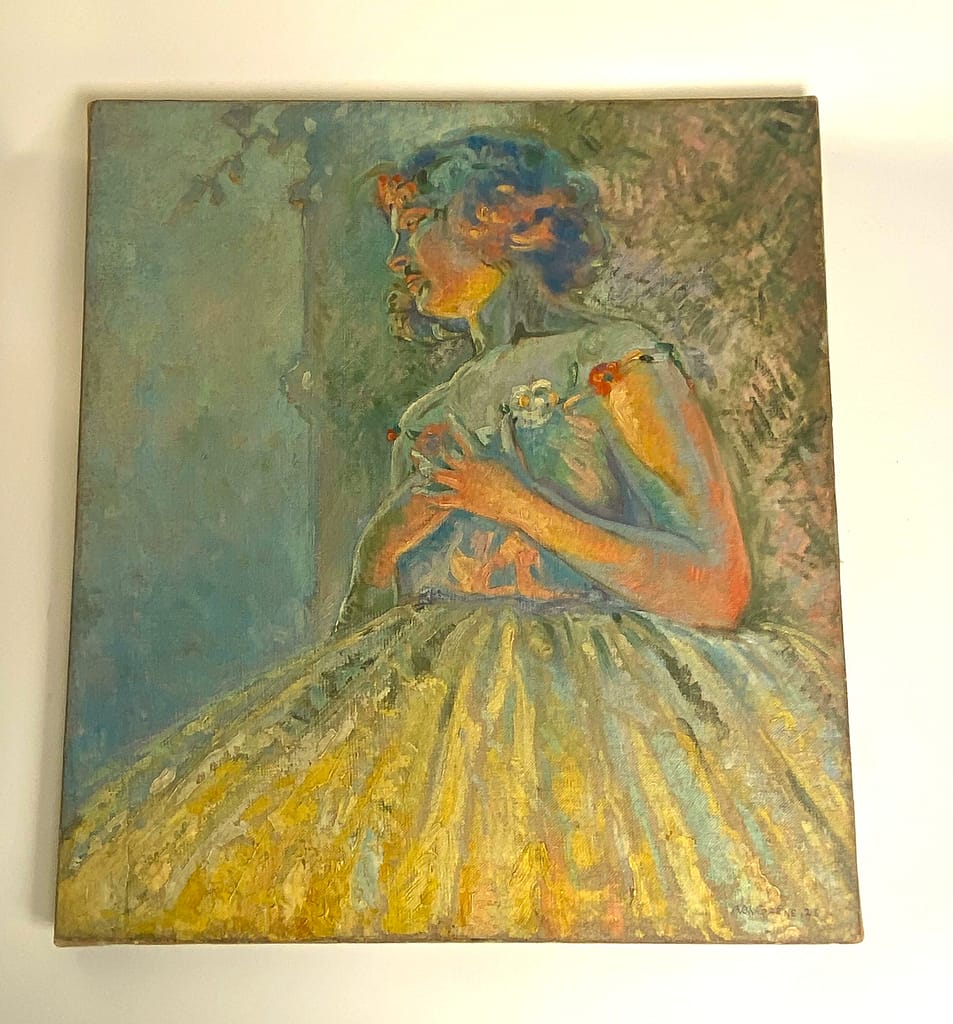
This unnamed oil painting of a ballet dancer shows Albert Van Ness Greene’s work from 1925. In it, we can see his signature use of light and color; something other students mention in the recording attached above.
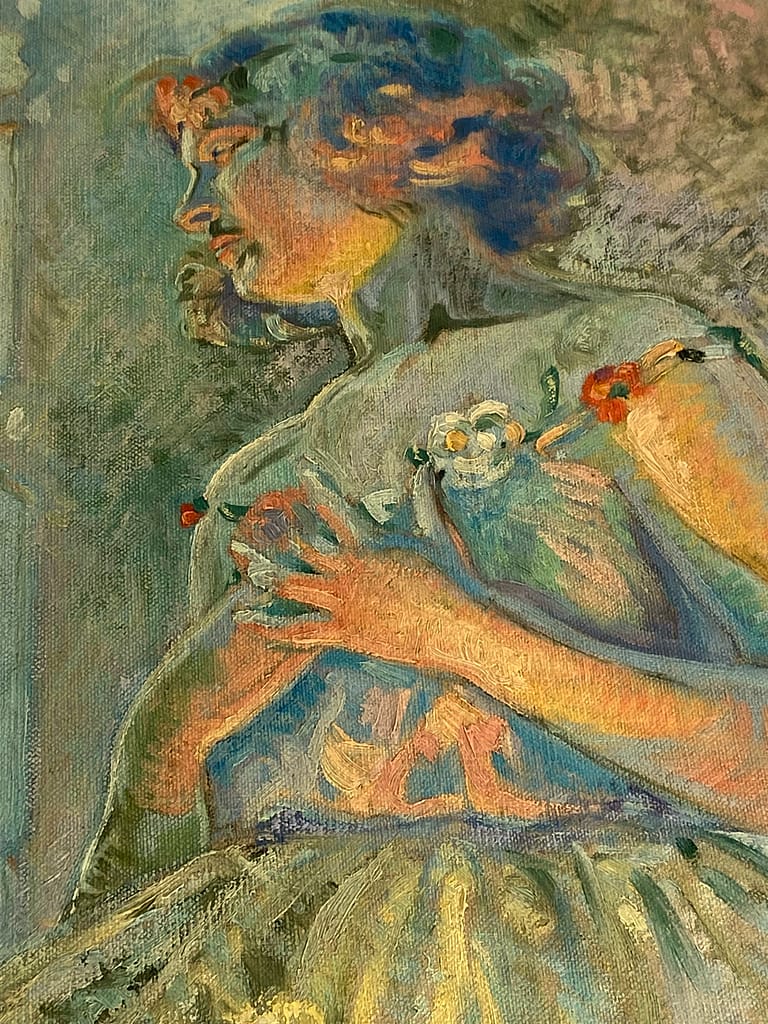
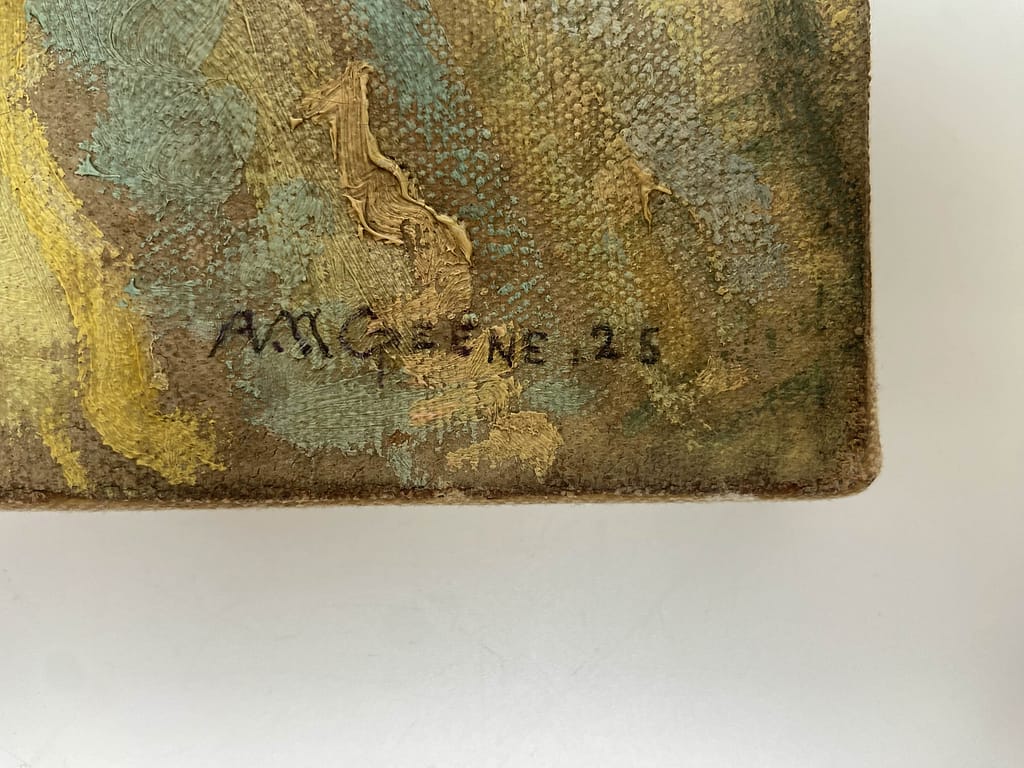
Pastel Hills
This next piece, a pastel artwork by Van Ness Greene, comes from an unspecified date and also shows his signature use of light and color.
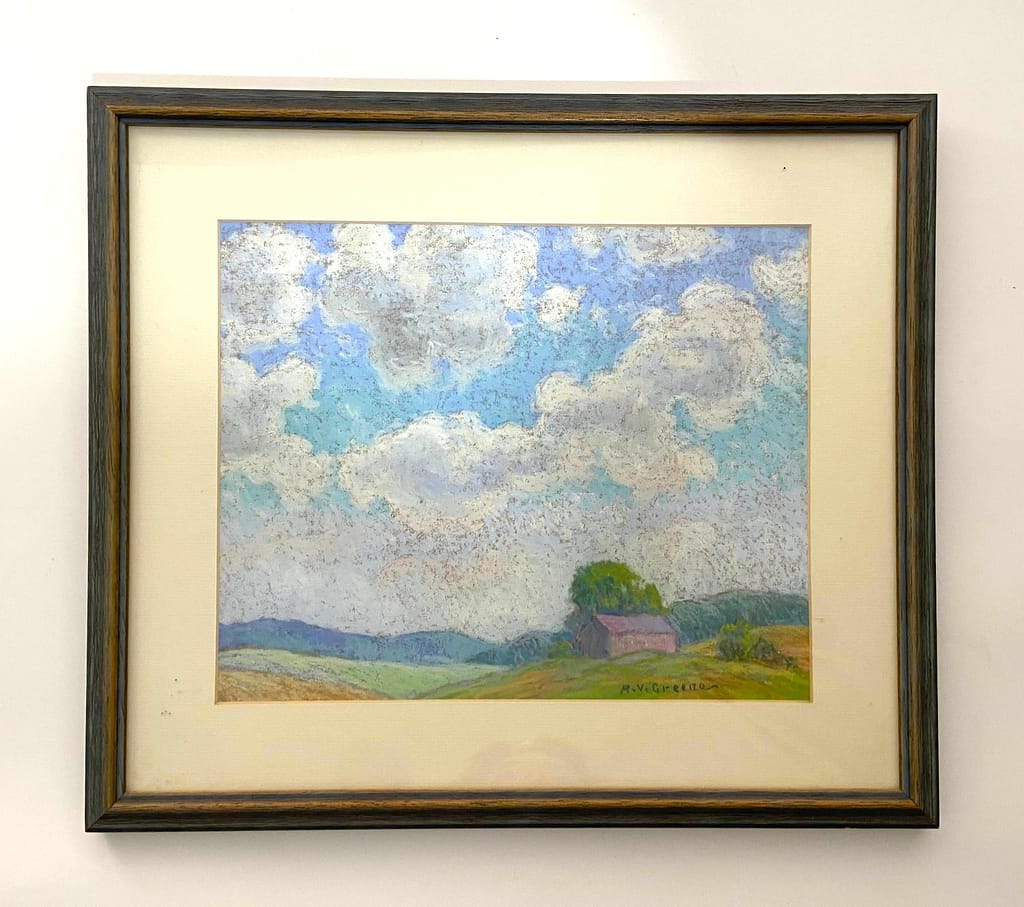
The rolling hills and farmland likely come from the area around Yellow Springs, as many of Van Ness Greene’s landscapes draw inspiration from the natural beauty of our area.
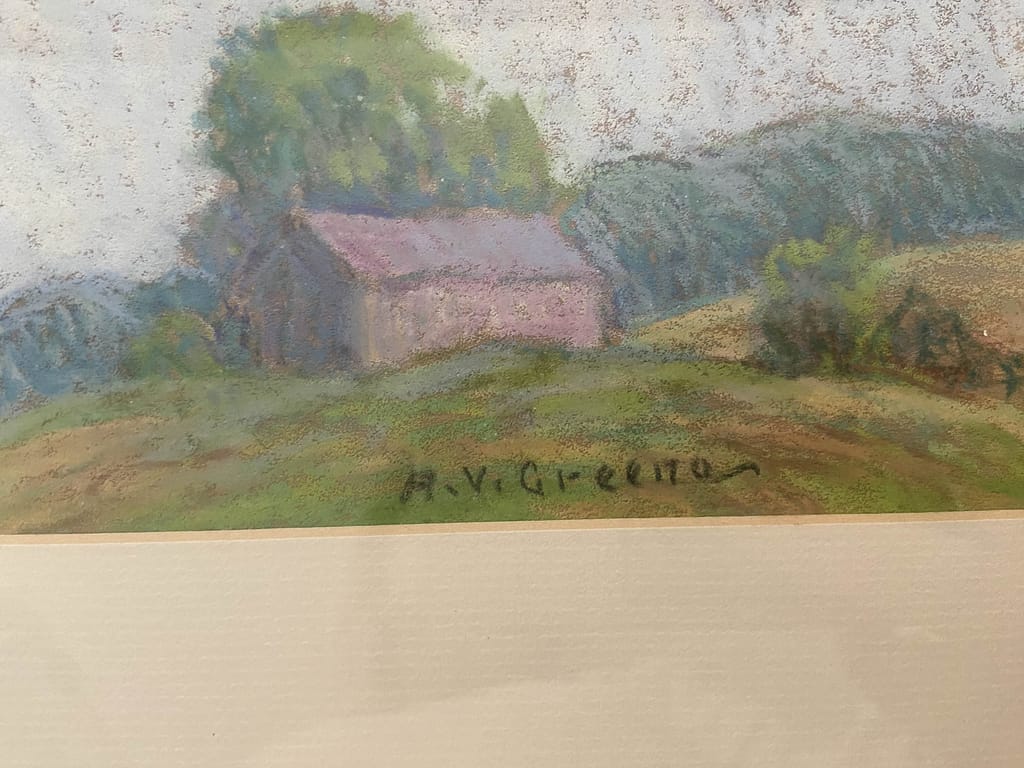
Crystal Diamond Spring and Bog Gardens Water Color
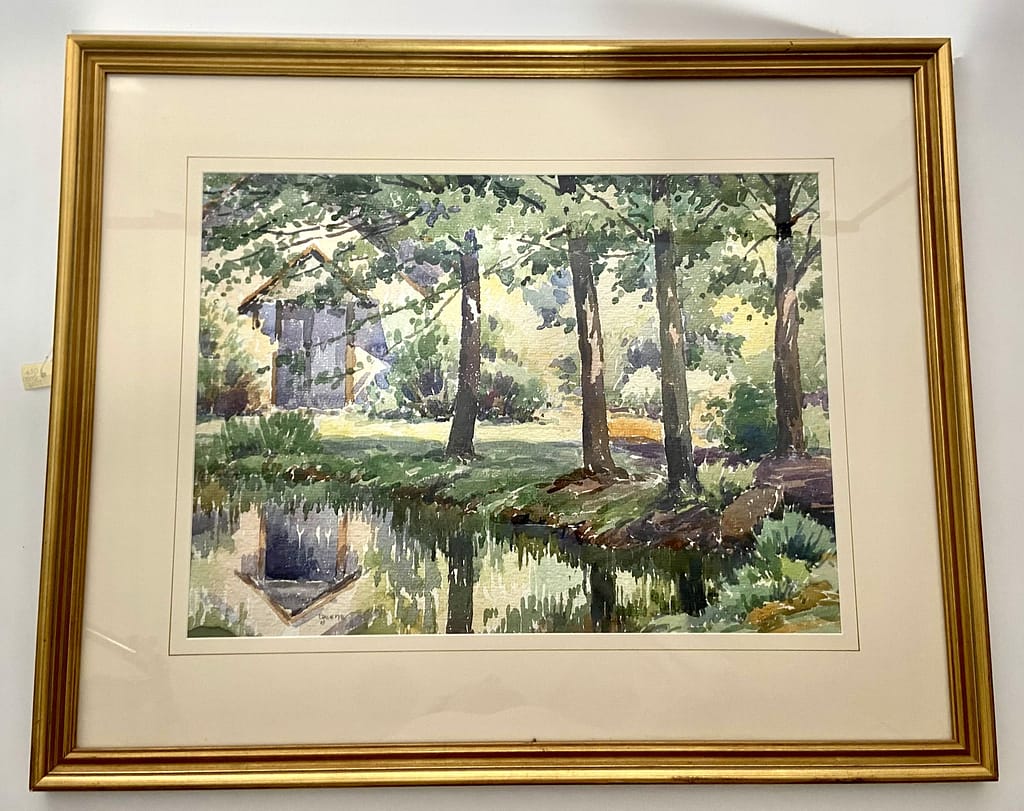
Van Ness Greene shows his skills across a number of different artistic mediums. The painting below features a watercolor piece he made of the Bog Gardens in the East Meadows.
You can see the Crystal Diamond Spring in the background, with a pool of water below the trees.

While we have only scratched the surface of Van Ness Greene’s extensive artistic career, this sampling of his portfolio proves that his time at the summer school in 1920 helped him develop a strong artistic style and voice: a continuity we can see across the many mediums he chose to use.
To Us, Today
As we examine the beautiful document that Albert Van Ness Greene created in preparation for September of 1920, we easily appreciate the care and craftsmanship he poured into making such an artifact.
Each student who carefully signed their name to this paper has their own story, and we need to do further research to uncover some of the finer details.
Much like how Greene used light in the paintings we discussed earlier, bringing this document to light here in Yellow Springs helps us truly honor that artistic spirit.
It also allows us to recognize the names of the individuals who once inhabited these old buildings and painted in the surrounding fields.
Their banquet in 1920 celebrated a new generation of artists- a new crop of creative voices. While it may not have been a Thanksgiving feast as we understand it today, we can certainly be thankful that such a beautiful piece of our history has endured for over a century.
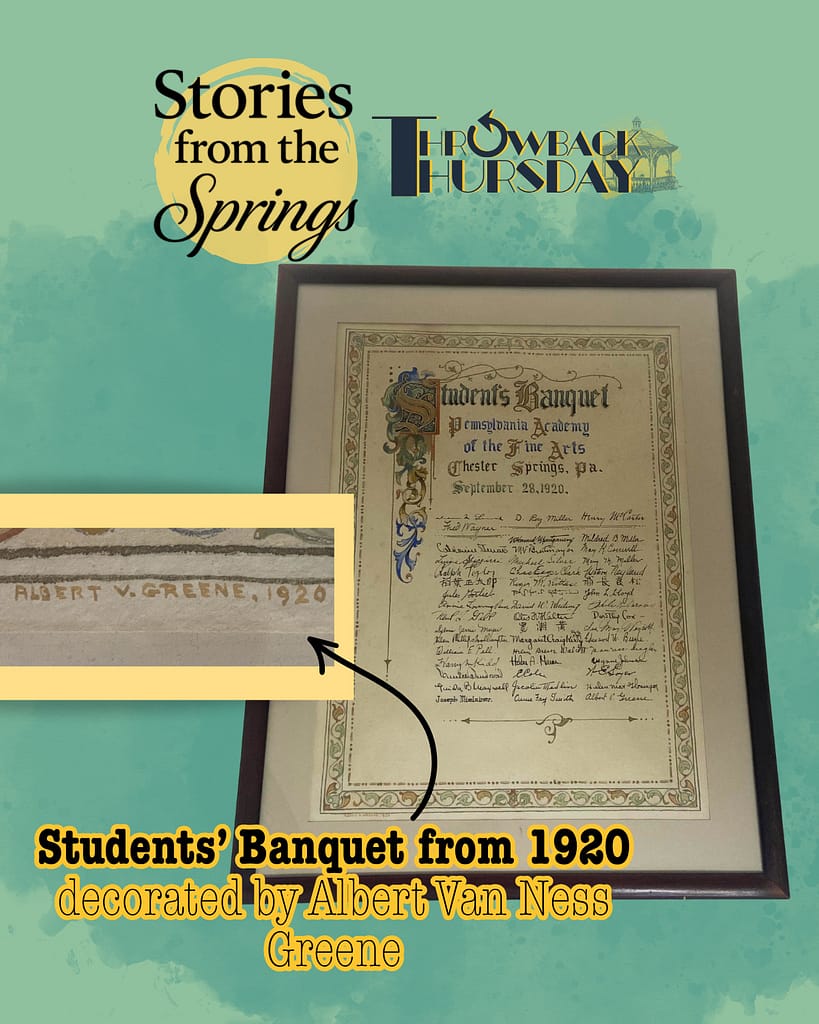
🎨🧑🎨📜
Learn more about the history of Yellow Springs
You can read the more in-depth version of this post here
Follow us on Substack, Instagram, and Facebook
🎨🧑🎨📜